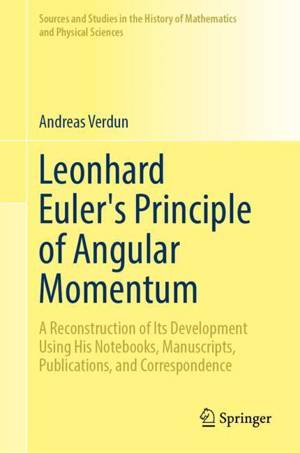
- Retrait gratuit dans votre magasin Club
- 7.000.000 titres dans notre catalogue
- Payer en toute sécurité
- Toujours un magasin près de chez vous
- Retrait gratuit dans votre magasin Club
- 7.000.000 titres dans notre catalogue
- Payer en toute sécurité
- Toujours un magasin près de chez vous
Leonhard Euler's Principle of Angular Momentum, 2 Teile
A Reconstruction of Its Development Using His Notebooks, Manuscripts, Publications, and Correspondence
Andreas VerdunDescription
This book provides the hitherto disregarded development of the principle of angular momentum, and aims at reconstructing its inception by analyzing Euler's relevant publications and correspondence, and using his unpublished manuscripts and notebook records. The derivation of the equations of motion for rigid body rotation is one of Euler's main achievements in mechanics and celestial mechanics. It enabled the foundation of later developments that became known as the angular momentum theorem or, as it is called here, the principle of angular momentum (PAM). Along with Euler's first mathematical formulation of "Newton's law of motion," called the linear momentum theorem or the principle of linear momentum (PLM), modern historiography of science assigned these principles to Euler, honoring him by calling them "Euler's principles or laws of mechanics." However, the history behind these principles, in particular the developing and establishing processes of PAM, remained in darkness until now. This is probably why Euler's achievements commonly are still subsumed in "Newtonian physics" or even labeled with it. A good deal of Euler's original documents relevant for unearthing these processes are presented and translated here for the first time.
Spécifications
Parties prenantes
- Auteur(s) :
- Editeur:
Contenu
- Nombre de pages :
- 1164
- Langue:
- Anglais
- Collection :
Caractéristiques
- EAN:
- 9783031839627
- Format:
- Livre relié
- Dimensions :
- 155 mm x 235 mm







